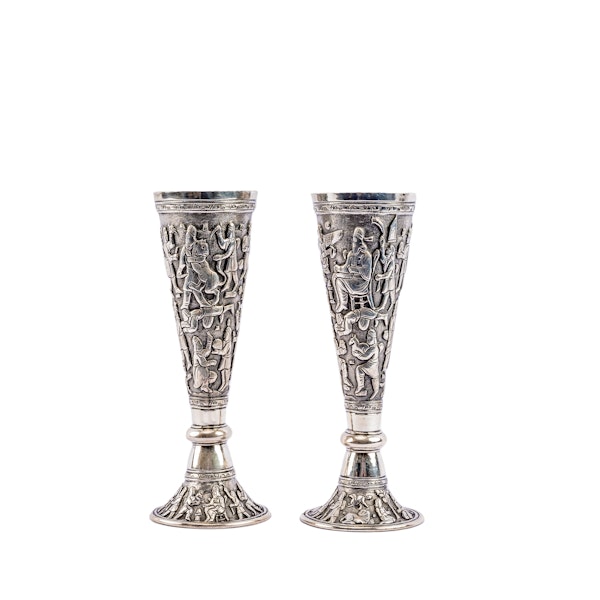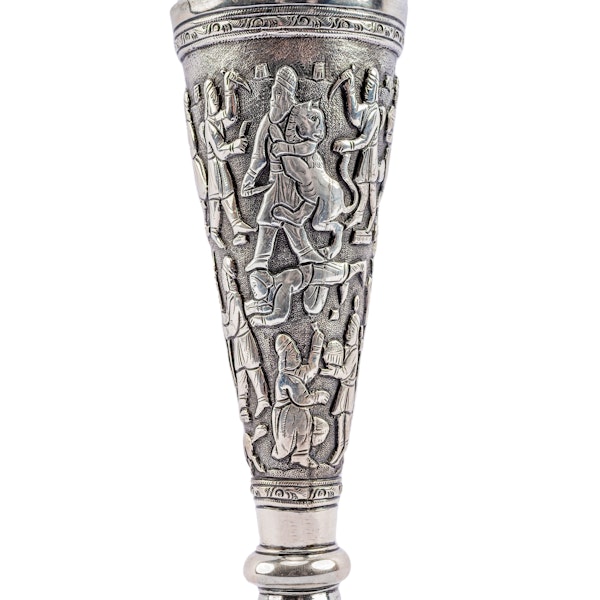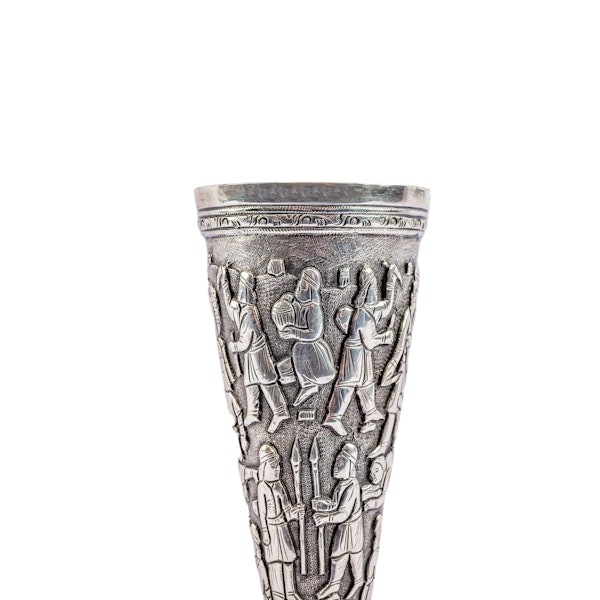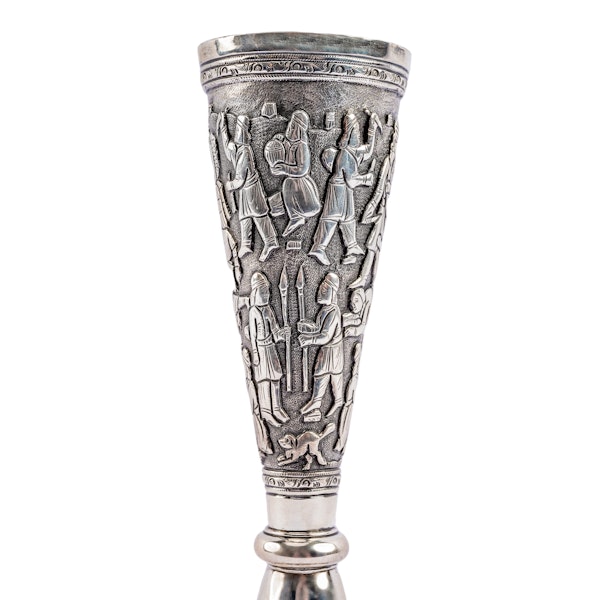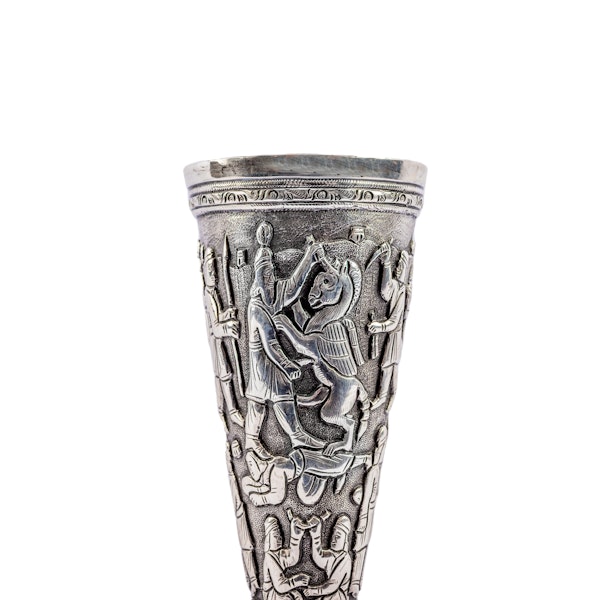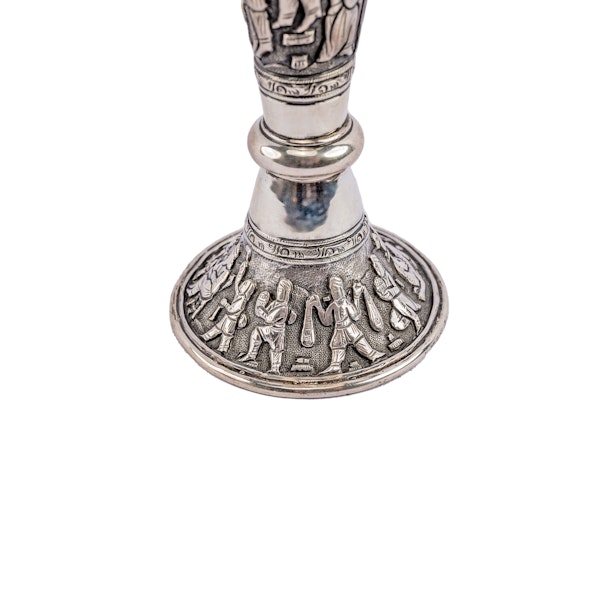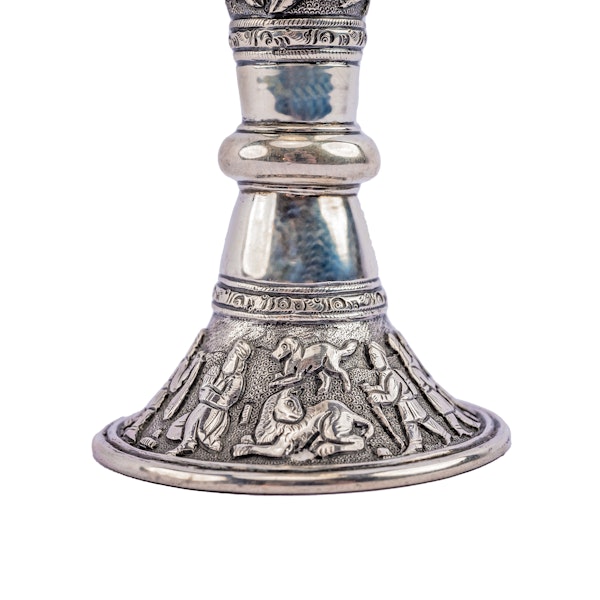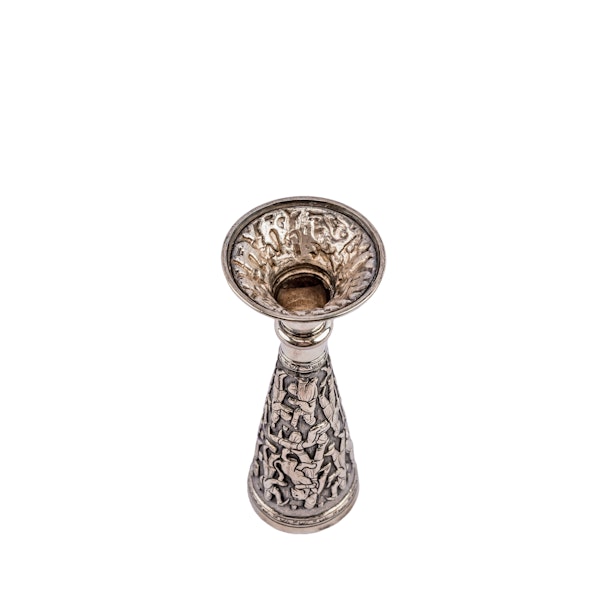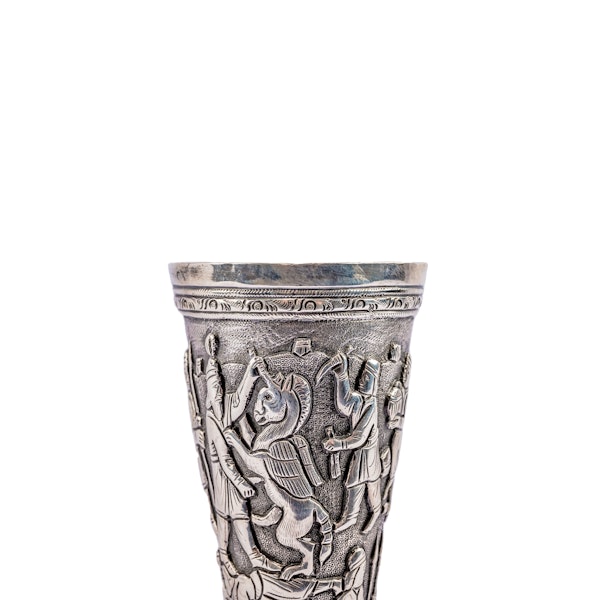A Pair of Persian Silver Figural Vases, Shiraz, Iran c. 1930
A Pair of Persian Silver Figural Vases, Shiraz, Iran c. 1930
£1,400.00
Description
A Pair of Persian Silver Figural Vases, Shiraz, Iran c. 1930
This charming pair of repousse and chased silver conical vases were made in Shiraz, Iran, (formerly Persia) in the early twentieth century. Persian craftsmen have excelled in metalwork, including silver, for centuries. Silver objects from Shiraz have a distinct style and are much rarer than silver objects from Isfahan, the largest regional production centre.
The vases are of conical shape with a short stem with a knop over a conical foot. The silversmith has used repousse and chased techniques to ornament the vases with multiple figures, human and animal. Most of the human figures show vitality and purpose, they are all doing something, carrying something or sharing something with others.
Shiraz was a prominent city along the Silk Road, the ancient trade route which facilitated the journeys of merchants and the cultural interchange of ideas, innovations and philosophies between East and West. Shiraz is also the ancestral home of the popular Syrah, or Shiraz, grape variety which originated in this region and cultivated in the countryside surrounding the city. The distinctive style of ornament on Shiraz silverware has also been influenced by the style and subjects of the magnificent stone reliefs at the archaeological site of Persepolis, now a United Nations World Heritage Site, which lies about 65 km northeast of Shiraz. The figures on the vases are all portrayed as if viewed from the side, as are the figures on the Persepolis reliefs.
Persepolis was founded by Darius I, often referred to as Darius the Great, who ruled the great Achaemenid empire from 522-488 BC. Darius’ empire stretched from the Indus in the East to Mesopotamia, Greece and Libya in the west and Persepolis was intended to be the ceremonial capital of the empire. Unfortunately, it had a relatively short life as it was sacked and partially destroyed by the army of Alexander the Great in 331 BC and the ruins largely ignored for the next 2,300 years.
In 1905, German Jewish archaeologist, Ernst Emil Herzfeld, visited Persepolis to study the stone reliefs which he wanted to include in a book he was writing about Iranian stone reliefs. His book, “Iranische Felsreliefs” was published in Berlin in 1910. In 1923, Herzfeld returned to Persepolis to photograph and document the site. During this visit he was fortunate in forming connections with some influential Iranians who were of great use to him later, helping him to negotiate the rights to excavate at Persepolis. Eventually, Reza Shah, the Pahlavi dynasty ruler of Iran at that time, gave Herzfeld his permission.
Herzfeld began excavating in 1931 and his findings brought Persepolis’s magnificent reliefs to the world’s attention. He continued excavating there until 1934 when the rapid rise of the Nazi party and the associated antisemitism within Germany made him very fearful and he made the decision to emigrate to America.
Provenance - North American Art Market
Height - 16.8 cm
Maximum Width - 5.3 cm
Weight - 350 grams
| item details | |
|---|---|
| Origin | Middle Eastern |
| Period | Early 1900s |
| Style | Other |
| Condition | Excellent |
| Dimensions | Height - 16.8 cm Maximum Width - 5.3 cm |
| Diameter | Weight - 350 grams |
Product REF: 10082

